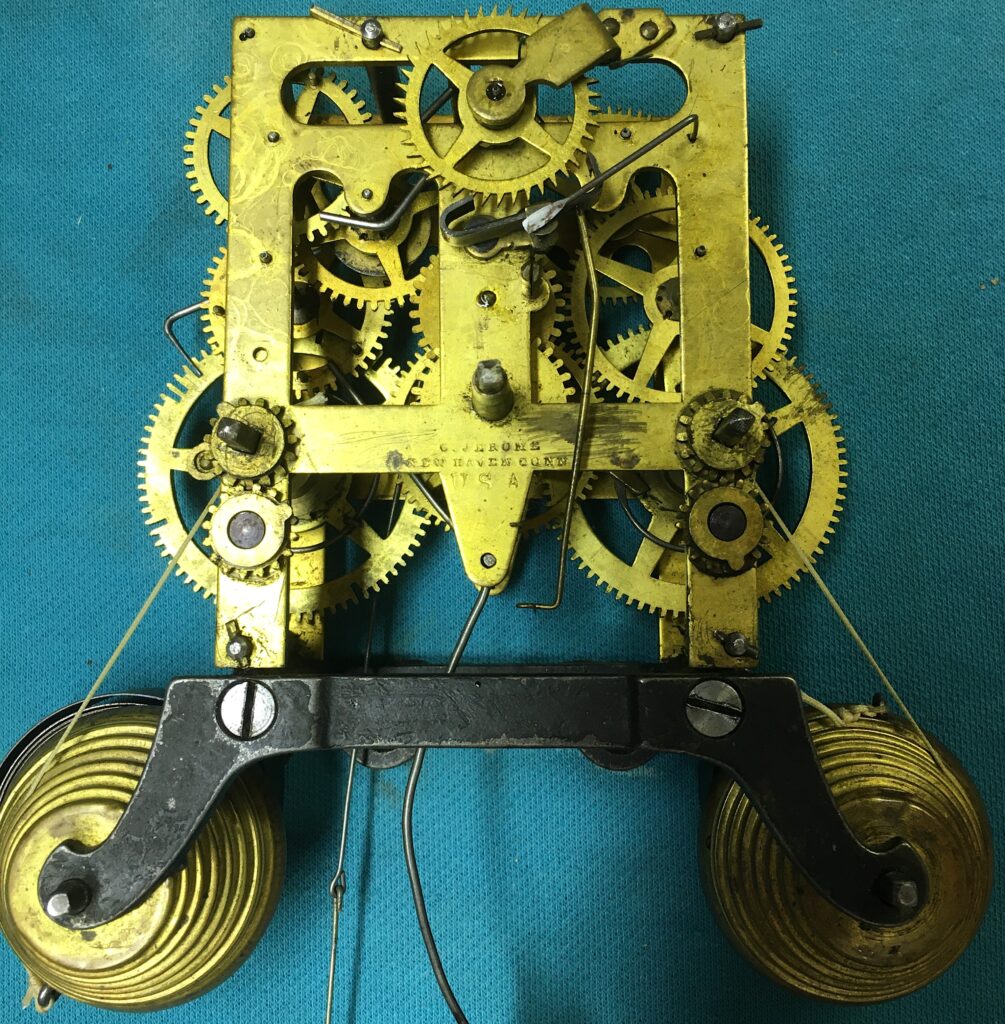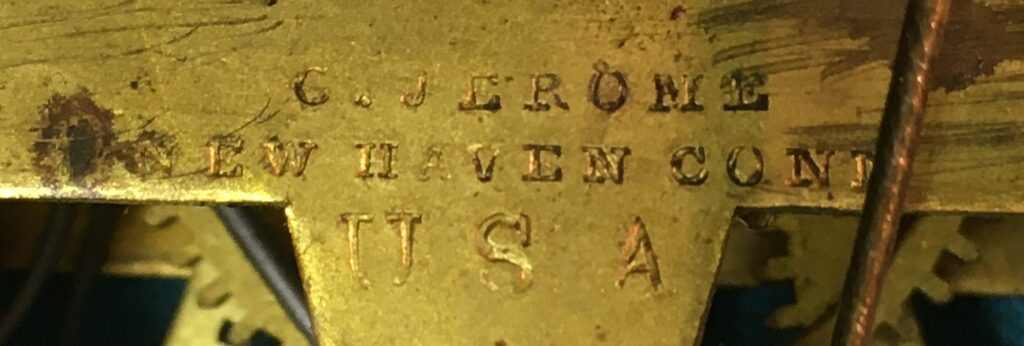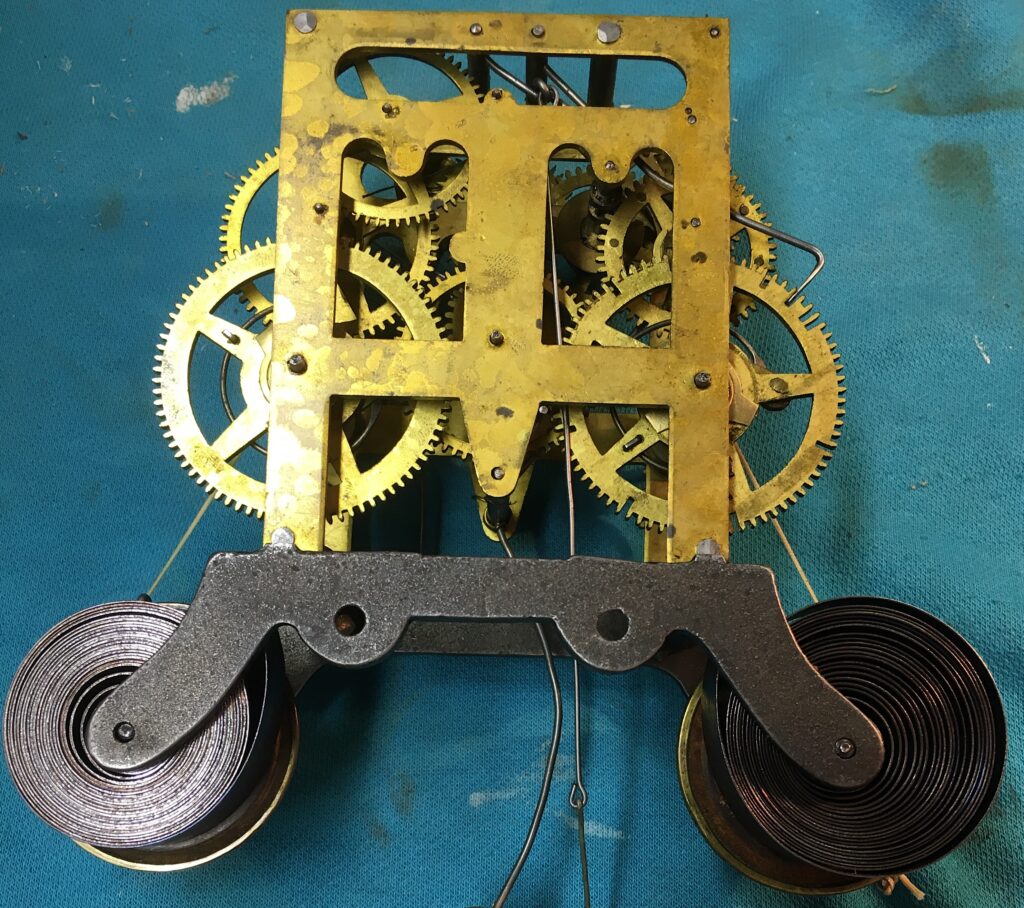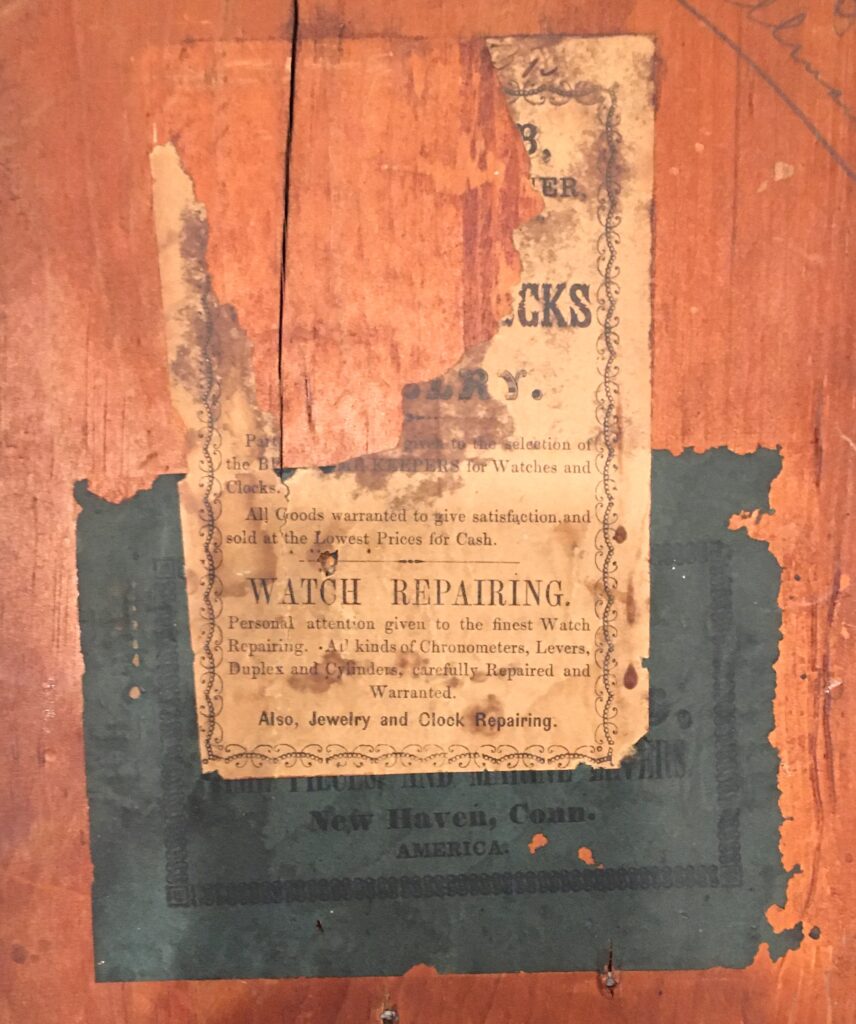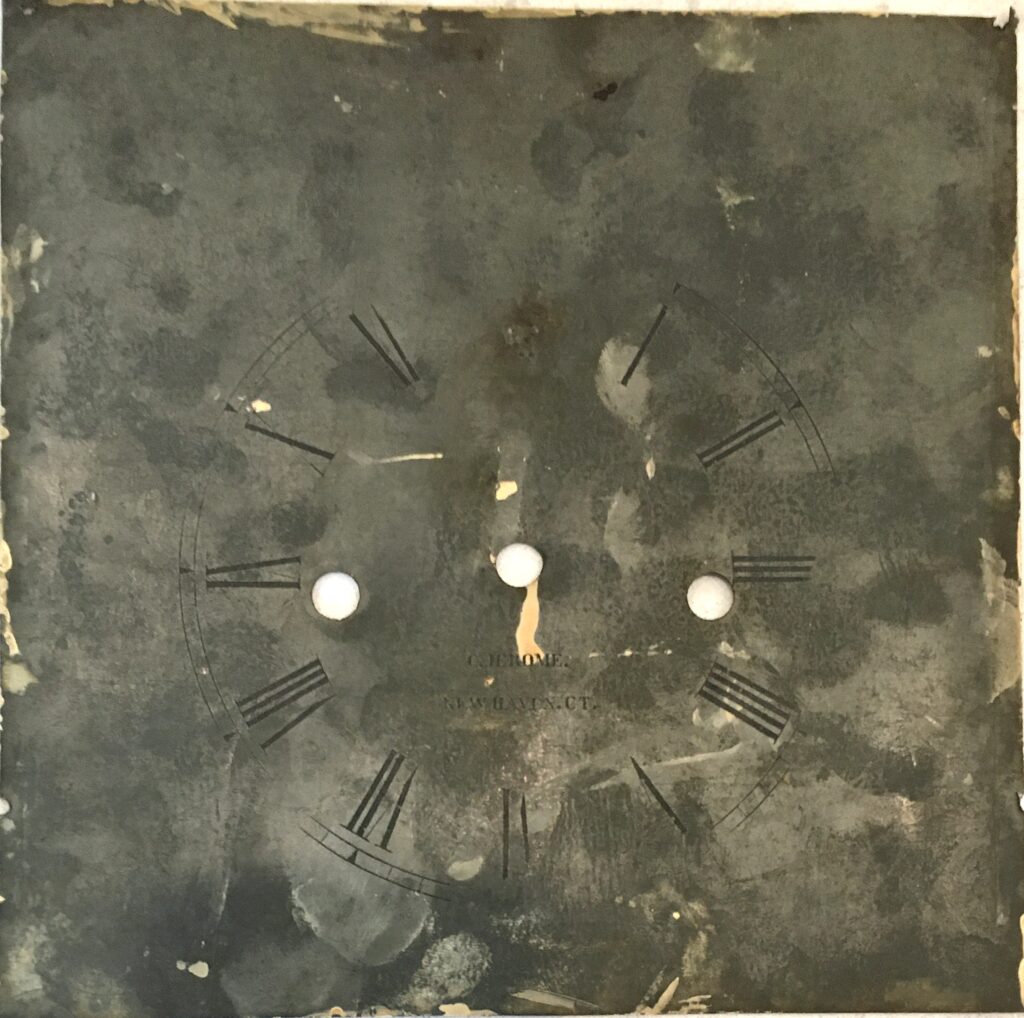This clock, the Union model, can be found in both the 1852 and 1853 Jerome trade catalogs, though the 1852 catalog depicts it with a flat front, unlike the 1853 catalog, which shows a raised flat molding (see this clock for an example) around the outer margin of the door. In From Rags to Riches to Rags, Chris Bailey shows a Jerome circular from around 1850 with the raised molding version of the Union model. He notes that the circular may pre-date 1850, because the spring-driven clocks all have fusees. The case is mahogany, but it was also offered in rosewood, and, in 1853, you could also get it in black walnut.
The movement is an 8-day, fusee, time & strike, with the maker’s stamp stating, “C. JEROME/NEW HAVEN CONN/USA.” The movement was likely made by A.S. Platt & Co. for Jerome. According to Spittlers & Bailey’s Clockmakers and Watchmakers of America (2nd ed.), Platt & Co. were in business from 1849-1857. If Chris is right that the fusee movement predates 1850, then that narrows down the date of the clock to 1849.
The maker’s stamp is the one that I’ve only seen on movements that were made by Platt & Co. It states, “C. JEROME/NEW HAVEN CONN/USA”. Jerome movements, if stamped, would have had “CHAUNCEY JEROME”, rather than “C. JEROME”.
Rear view of 8-day fusee movement.
The blue label has unfortunately been partly covered by either a retailer or repair shop label. Based on other examples of this label I’ve seen, it reads “CHAUNCEY JEROME,/MANUFACTURERS OF/EIGHT AND ONE DAY/BRASS CLOCKS,/TIME PIECES, AND MARINE LEVERS./New Haven, Conn./AMERICA.”
An intriguing feature of the dial can be seen on the back side, which has the chapter ring and maker’s mark printed in ink on the bare (with one exception) zinc metal. The exception is that part of the maker’s mark (portions of the O and M) is on a cream-painted area of the zinc (spillover from the front). The front of the dial has been somewhat crudely re-inked and then smudged (presumably from attempts at cleaning).
My wife and I found the clock at a spur-of-the-moment stop at an antique shop while vacationing in New Hampshire a month ago. We’ve visited the shop before, but it rarely has things of interest to us. The clock wasn’t in running condition. It had very old gut cords; the cord on the strike side still intact, the cord on the time side broken and fraying. I replaced the gut with braided synthetic cord and ran it enough to know that it works.

